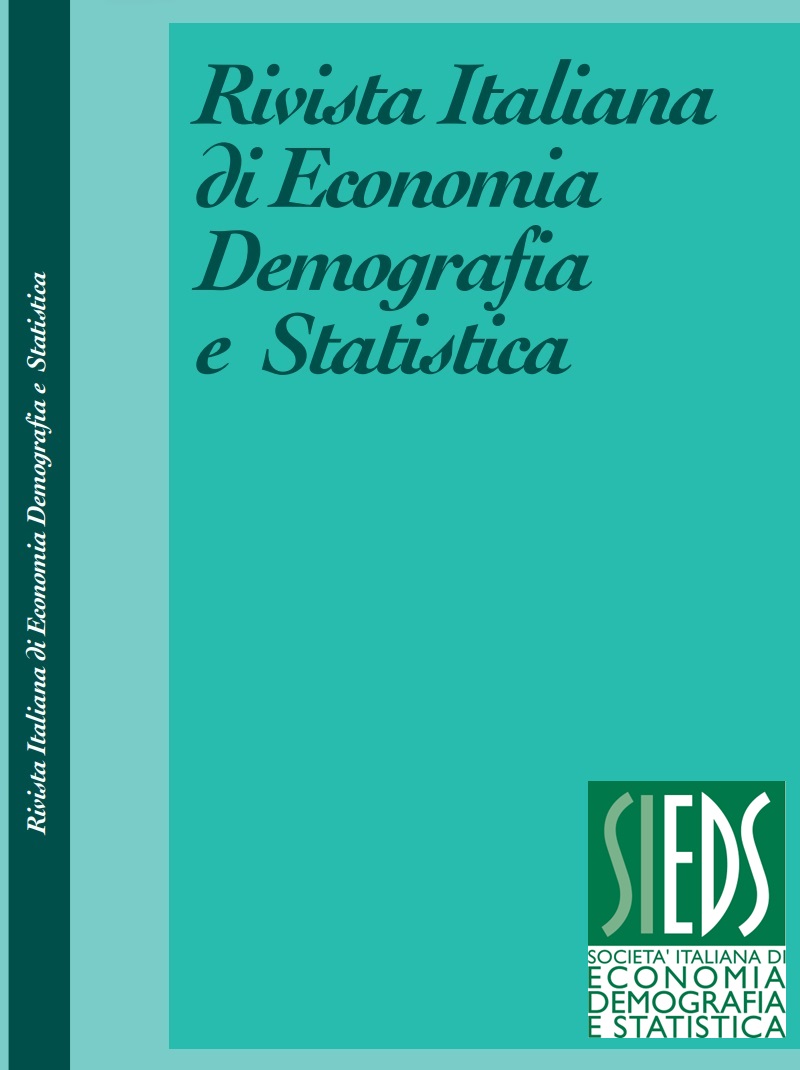Evolution and change of winter tourism. How seasonality affects the economy of Lombardy’s Mountain Communities on the Olympic Road (Milano-Cortina 2026)
DOI:
https://doi.org/10.71014/sieds.v78i3.291Keywords:
mountain tourism, winter tourism, seasonality, MilanoCortina2026, climatechangeAbstract
Using municipal data on tourist overnight stays, this paper examines tourist seasonality of Lombardy’s Mountain Communities (CCMM) over the last 15 years. In detail, based on the geographical location proximity on the Olympic Road of Milano-Cortina 2026 winter edition, twelve Mountain Communities have been selected. Using widely known statistical indexes, the seasonality of the selected mountain communities was represented. The analyses confirm the presence of two types of seasonality in Lombardy: a growing summer seasonality driven by the lakes and a bi-seasonal one, which appears mostly in the Alpine and pre-Alpine areas, characterized by declining winter tourism flows relatively to the rest of the year. Exploiting the legacy of Milano Cortina 2026 Olympic event, this study intends to offer a contribution to the deseasonalization policies to be implemented in mountain areas.
References
BAUM, T., HAGEN, L. 1999. Responses to seasonality: the experiences of peripheral destinations. International journal of tourism research, Vol.1, No.5: pp. 299–312. DOI: https://doi.org/10.1002/(SICI)1522-1970(199909/10)1:5<299::AID-JTR198>3.3.CO;2-C
BAUM, T., LUNDTORP, S. 2001. Seasonality in tourism: An introduction. Seasonality in tourism, Vol. 4. DOI: https://doi.org/10.1016/B978-0-08-043674-6.50004-0
BUTLER, R. 1994. Seasonality in tourism. issues and problems: Tourism. the state of art, pp.332–339.
CANDELA, G., FIGINI, P. 2010. Economia del turismo e delle destinazioni. Mac-Graw-Hill.
CANDELA, G., GIANNERINI, S., SCORCU, A. E. 2007. Rimini. le caratteristiche strutturali di una destinazione balneare matura. Economia dei Servizi, Vol. 2, No.1:pp.123–146.
CICCARELLI, M. 2018. Analisi statistica della stagionalità nelle regioni italiane: come la distribuzione annua delle presenze influenza l’economia della desti- nazione turistica.
COSTA, P. 2001. La sostenibilità e il turismo, Politica economica del turismo, Milano.
CRABOLU, G., FONT, X., MILLER, G. 2023. The Hidden Power of Sustainable Tourism Indicator Schemes: Have We Been Measuring Their Effectiveness All Wrong? Journal of travel research. DOI: https://doi.org/10.1177/00472875231195736
CRESPI, A., MATIU, M., BERTOLDI, G., BERRO, D. C., CIANFARRA, P., MAJONE, B., VALT, M. 2021. Il primo archivio di osservazioni giornaliere di altezza neve al suolo nell'arco alpino: analisi delle tendenze dal 1971 al 2019. Nimbus.
DAL BIANCO, A., CAPRINO, G. 2023. Analisi della stagionalità del turismo nelle comunità montane della Lombardia. In MILeS2023: Milano-Impresa, lavoro e società, pp. 1-18.
DONATO, C. 2007. Turismo rurale, agriturismo ed ecoturismo quali esperienze di un percorso sostenibile. EUT Edizioni Università di Trieste.
GON, M., GRASSETTI, L., MARANGON, F., RIZZI, L., TROIANO, S. 2019. Between seasonality and overtourism in seaside destinations: Multi-stakeholder perceptions of hosting music events during summer season. In Overtourism. Routledge, pp. 135-148 DOI: https://doi.org/10.4324/9780429197987-10
JEFFREY, D., BARDEN, R.R.D., BUCKLEY, P.J., HUBBARD, N.J. 2002. What makes a successful hotel? Insights on hotel management following 15 years of hotel occupancy analysis in England, The Service Industries Journal, Vol. 22, No.2, pp. 73–88. DOI: https://doi.org/10.1080/714005078
KOENIG-LEWIS, N., BISCHOFF, E. E. 2010. Developing Effective Strategies for Tackling Seasonality in the Tourism Industry. Tourism and Hospitality Planning & Development, Vol.7, No. 4, pp. 395–413. DOI: https://doi.org/10.1080/1479053X.2010.520466
MACCHIAVELLI, A. 2006. Il turismo montano tra continuità e cambiamento, Vol. 4. FrancoAngeli.
MARIANI, G. M., SCALISE, D. 2022. Climate change and winter tourism: evidence from Italy. Bank of Italy Occasional Paper, No. 743. DOI: https://doi.org/10.2139/ssrn.4463147
MHANNA, R., BLAKE, A., JONES, I. 2019. Spreading tourists around host countries of mega sport events: A strategy to overcome overtourism in host cities. Worldwide hospitality and tourism themes, Vol. 11, No.5, pp.611-626. DOI: https://doi.org/10.1108/WHATT-06-2019-0040
MORRISON, A. 1998. Small firm statistics: a hotel sector focus, Service Industries Journal, Vo. 18, No. 1, pp. 132–42. DOI: https://doi.org/10.1080/02642069800000008
NADAL, J. R., FONT, A. R., ROSSELLO, A. S. 2004. The economic determinants of seasonal patterns. Annals of Tourism Research, Vol. 31, No.3, pp.697–711. DOI: https://doi.org/10.1016/j.annals.2004.02.001
NEVEDIVERSA. 2023. Il turismo invernale nell’era della crisi climatica. Rapporto annuale Legambiente. Anno 2023.
NEVEDIVERSA. 2024. Il turismo della neve nelle montagne senza neve. Rapporto annuale Legambiente. Anno 2024.
WILLIBALD, F., KOTLARSKI, S., EBNER, P. P., BAVAY, M., MARTY, C., TRENTINI, F. V., GRÊT-REGAMEY, A. 2021. Vulnerability of ski tourism towards internal climate variability and climate change in the Swiss Alps. Science of the Total Environment, Vol. 784:147054. DOI: https://doi.org/10.1016/j.scitotenv.2021.147054
Downloads
Published
Issue
Section
License
Copyright (c) 2024 Gianpaolo Caprino, Antonio Dal Bianco

This work is licensed under a Creative Commons Attribution 4.0 International License.



